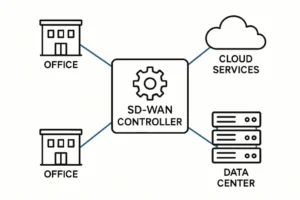A well-crafted settlement plan ensures long-term stability by aligning financial strategies with the injured party’s future needs. It accounts for medical care, living expenses, tax implications, and guardianship considerations when necessary. Involving financial planners, legal experts, and structured settlement professionals helps tailor the plan to individual goals and life circumstances. A comprehensive settlement plan empowers beneficiaries to manage funds wisely and maintain a secure, sustainable quality of life by prioritizing immediate and future needs.
What Is a Settlement Plan and Why Does It Matter?
Individuals and families often face challenging financial decisions when facing the complexities of legal settlements. A carefully structured Settlement Plan helps manage these funds with precision and foresight. Such a plan determines how compensation is disbursed, invested, and protected over time, focusing not only on immediate costs but also on providing security well into the future. This is more than just a legal arrangement—it’s the cornerstone of a recipient’s financial health, guiding them toward stability when life has taken an unexpected turn.
A well-designed settlement plan is crucial for individuals recovering from serious injuries or wrongful death cases, as it addresses both current obligations and future goals. It ensures assets are available when needed most and reduces the risk of prematurely depleting the settlement, often when funds are unmanaged. This plan offers peace of mind and ensures assets are available when needed.
Key Elements of an Effective Settlement Plan
- Needs Assessment: The foundation of any robust Settlement Plan is a comprehensive evaluation of short-term and long-term requirements. Recipients must consider immediate medical care, housing needs, support for dependents, and even unforeseen life events. This assessment often involves collaboration with medical professionals, financial planners, and sometimes life care planners who forecast future expenses, ensuring all potential obligations are covered in detail.
- Financial and Legal Considerations: Settlements come with many tax and legal considerations, including the impact on government benefits, potential probate, and inheritance issues. A well-thought-out plan will leverage trusts, annuities, or other legal tools to help mitigate tax liabilities and prevent interruption of crucial public benefits. By structuring the plan with these factors, recipients are better protected from pitfalls that may jeopardize their financial security.
- Collaboration with Stakeholders: Settlement planning is rarely a solo endeavor. In most cases, family input, alongside a multidisciplinary team of professionals, ensures the plan is tailored to personal values and goals. Transparent communication with all stakeholders keeps everyone aligned and makes it easier to adapt the plan as circumstances change.
Building Blocks: Types of Settlement Plans
At the heart of every settlement strategy are two primary funding options: structured settlements and lump-sum payments. Structured settlements distribute compensation through periodic payments—monthly, annually, or at specific life milestones. This approach suits those who need a consistent income stream, ensuring that settlement money isn’t exhausted during the early years. They’re especially beneficial for minors, people with disabilities, or anyone who would benefit from long-term security.
Lump-sum settlements, on the other hand, provide immediate access to the entire sum. While this can be advantageous—covering significant, one-time expenses such as home renovations for accessibility or paying off debt—it comes with greater responsibility. Good financial stewardship is vital because, without a proper plan, such funds are often depleted too soon. Drawing on real-world case studies, many successful outcomes result from hybrid strategies combining both methods, providing immediate flexibility and sustained security.
Collaborating with Advisors for Optimal Results
An effective plan requires a collaborative approach that includes legal professionals, financial planners, and medical or life care experts. These professionals work together to address regulations and budget and forecast future needs, ensuring the plan is realistic and sustainable. Effective communication and trust are crucial in this collaborative approach. Healthcare professionals may need to project costs and provide funding that lasts as long as necessary for a person with ongoing care needs. Attorneys can keep the plan aligned with changing laws and address potential issues. Regular meetings allow the recipient and their family to revisit goals and adjust details, ensuring the plan remains relevant and practical.
Mitigating Risks: Safeguarding Settlement Assets
Asset protection is essential to successful settlement planning. Legal mechanisms such as special needs trusts, spendthrift trusts, and annuities ensure recipients retain access to necessary funds while protecting against potential risks like creditor claims or financial mismanagement. Planning for contingencies—from health crises to market fluctuations—requires a proactive and layered approach.
Properly structured trusts, for instance, can ensure lifelong support for a beneficiary who cannot manage funds independently. Sometimes, appointing a professional fiduciary is advisable, particularly for minors or persons with disabilities. Consulting guidance on asset protection techniques is essential, especially when considering that a sudden windfall can sometimes attract unwanted attention or risk.
Customizing Settlement Strategies for Unique Needs
Settlement plans should be tailored to individual needs, such as trust structures for minors and predictable payouts for adults with complex medical situations. Adaptations may include timing payments with educational milestones or scaling payments with increasing health costs. Public benefit eligibility is another layer of complexity, as individuals receiving settlements while qualifying for Medicaid or SSI must avoid breaching asset limits. Settlement professionals work with families to design plans that support long-term independence and well-being.
Staying Current: How Regulations and Laws Shape Settlement Planning
Settlement laws constantly evolve, necessitating regular updates for recipients and advisors to avoid compliance issues and unexpected tax burdens. These changes can impact the payment of structured settlements and the choice of trust vehicles. Regular legal reviews are crucial to prevent disruptions in benefits eligibility, increased tax liability, or impractical payouts. A responsive schedule of annual or biannual reviews is essential for long-term security.
Action Steps: Developing and Maintaining Your Settlement Plan
- Begin with a thorough assessment: Understand immediate financial needs, project long-term costs, and anticipate lifestyle changes.
- Form a multidisciplinary team: Seek the counsel of professionals from relevant fields—legal, financial, and healthcare—to provide robust input.
- Choose the best settlement structure: Weigh the pros and cons of structured payouts versus lump-sum settlements, considering both risk and flexibility.
- Establish protective legal structures: Utilize appropriate trusts, annuities, or fiduciaries to safeguard assets and maintain public benefits.
- Personalize the plan: You can customize disbursements, access, and oversight based on your age, health, and personal goals.
- Stay vigilant: Schedule ongoing reviews and adjustments as circumstances, laws, or goals change.
Financial security after a settlement relies on careful planning, teamwork, and flexibility. By focusing on the recipient’s unique needs, involving a team of advisors, and revisiting the plan over time, the journey from legal resolution to financial stability becomes not only possible but sustainable.
Also Read- The Role Of Payroll Compliance In Business Success








